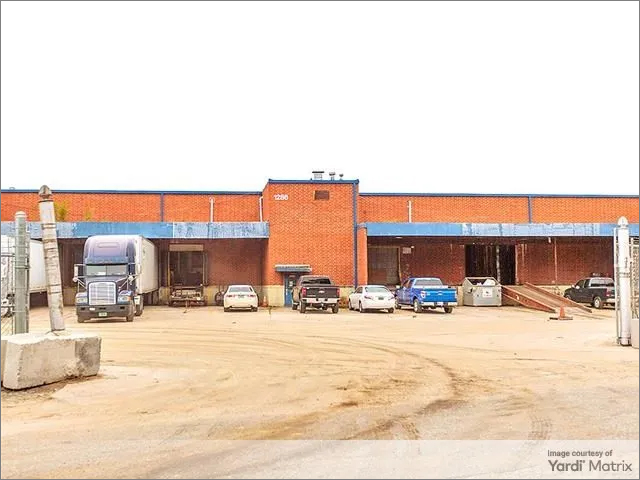Self Storage and the COVID-19 Factor
The William Warren Group’s Gary Sugarman discusses the challenges the coronavirus outbreak has caused for the self storage industry and where the sector is heading.
Although self storage is not entirely immune to the pandemic-induced economic stress, as lockdown-related restrictions began to ease, activity picked up pace in the sector. Major positive and negative life events drive demand for storage. The coronavirus outbreak has enforced change on people, underscoring the need for storage space. After a long tenure of negative performance, the sector proved its resilience in July. On a month-over-month basis, street rates increased by 1 percent for the standard 10×10 non-climate-controlled units, according to the latest Yardi Matrix report.
Gary Sugarman, COO at the William Warren Group, provides an overview of the struggles the industry has had to deal with since the start of the global health crisis and talks about the changes he expects to see going forward.
READ ALSO: Rizk Ventures Launches Self Storage Platform
How has the coronavirus outbreak affected your portfolio and operations across the country?
Sugarman: The impact on operations has been quite significant. While all of our facilities have remained open throughout the pandemic for regular operating hours, operations have been far from normal. Upon the outbreak, we shifted to a behind-the-glass operation and communicated with our customers on-site over the phone and through the glass. Once shelter-in-place orders began to roll off and Centers for Disease Control and local governmental guidance became more clear, we again opened our doors, but enforced, and continue to implement, strict social distancing and cleaning protocols in order to protect our guests and our staffs.
Our facilities now include posters, notices, signage and floor decals that reinforce these protocols; gloves, hand sanitizer, additional sanitizing supplies, masks, face shields and sneeze guards for personal protection; and we have modified our staffing to minimize overlapping schedules. All visitors to the property must wear face coverings and comply with our posted social distancing protocols.
Tell us more about your business strategy during COVID-19. How has it changed since the start of the pandemic?
Sugarman: While we already had touchless rental capabilities in place, our capacity to sign leases online and over the phone quickly became central to our operation following the outbreak. We also have a 24/7 sales center, which immediately became our most vital hub for new rentals and service inquiries, as call volume has been dramatically higher during this period. Overall, our position has been throughout that our business is essential, and that the communities in which we operate have needed our services more than ever in order to continue to operate their own businesses, provide their own essential services to the community, and respond to the challenges that COVID-19 has presented to them, such as moving students back from campus, making room at home for online learning, etc. So we have taken great pride in rising to these challenges to continue to be open and available for our customers.
Which aspects of the storage sector have been most impacted by the pandemic?
Sugarman: Personnel management has probably been the most impacted. COVID-19 has thrown us all curveballs, and our employees have had to navigate quite a lot of obstacles, especially regarding the health and welfare of families and friends. As I’m sure is the case with other operators, we’ve had to introduce more flexibility into human resources policies and ensure compliance with leave policies.
Same story on the broader legal compliance landscape: We’ve similarly had to closely monitor the fast-moving and ever-shifting array of governmental orders in each of our municipalities across the country regarding rental rate caps, auction restrictions and other temporary tenant-related ordinances.
What can you tell us about rental activity in self storage during the last few months?
Sugarman: Rental activity surged in March at the outset of the outbreak, particularly at facilities proximate to college campuses. After the surge, activity declined significantly through April and into early May, largely as a result of the many shelter-in-place orders that were put into place across the country. However, beginning in late May, as these orders rolled off, rental activity again surged and has continued to accelerate through June, July and August.
Where do you see the most demand for self storage? What drives demand?
Sugarman: Life events drive demand. They always have. Birth, death, downsizing, upsizing, starting a new job, leaving your old job, children moving in and out, grandparents moving in and out, buying a home, selling a home, moving into or out of a rental property—these all generate self storage activity.
The dislocation created by COVID-19 has triggered much of this same activity and has therefore driven demand for self storage, except of course for when cities and states are in lockdown. We’ve also seen particularly intense demand throughout the pandemic around college campuses and very large institutional employers, such as hospitals, theme parks, etc., that may drive employees to move to or away from town based on commencing or suspending operations.
Industry experts are expecting a coronavirus-induced slowdown in self storage development activity. What are your predictions?
Sugarman: I think we will ultimately see a COVID-19 related slowdown in development. We’re starting to see some of that already, as some projects that were on the drawing board in certain cities appear to be dropping off. This is mostly driven by banks’ appetite to provide construction loans. Uncertainty and volatility in the financial markets always translate to banks taking a more conservative approach to underwriting, risk analysis and decision-making regarding loans, and self storage loans are certainly not immune to this. I suspect it’ll be considerably more difficult to find lenders and secure construction loans until markets adjust and are more confidently projecting that we’re approaching a new, healthier, and sustained post-COVID-19 economic cycle.
READ ALSO: The Power of Technology in the Self Storage Business
What long-term changes do you expect to see in the self storage sector in a post-COVID-19 world?
Sugarman: Touchless rentals, remote operations and Zoom seem like they’re all definitely here to stay, perhaps not as exclusive solutions, but as viable components of our operations as a regular part of our daily dynamic. Out of necessity, many operators have quickly become far more adept with available technologies and have incorporated them into their businesses for good. COVID-19 has taught us to outsource more, integrate better through technology with internal and external resources, and to rely on information and data systems to run our businesses to a greater degree than we have in the past.









You must be logged in to post a comment.